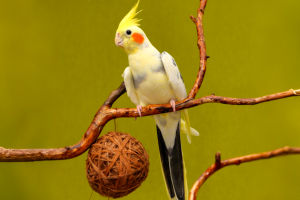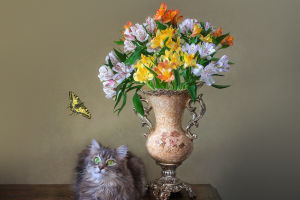For many of us who love both cats and plants, finding a balance between the two can be a challenge. Cats, with their natural curiosity, often end up nibbling on plants, which can be problematic.
Some plants may even be toxic to them, leading to potential health risks. But fear not, Lykkers! There are many beautiful and safe plants that we can grow in our homes that are not only cat-friendly but also add a fresh, green touch to our living spaces. Let's explore these safe options together!
Common Toxic Plants to Avoid
Before we dive into the plants that are safe for cats, let's first talk about the ones we should avoid. Some plants, despite being harmless to humans, can be highly toxic to our feline friends. The most famous (and dangerous) of these is the lily. While we humans may enjoy its beauty, lilies can cause acute kidney failure in cats, even with just a small amount of exposure, and there is no antidote. It's best to keep lilies and other similar plants out of reach!
Here are some other common toxic plants to keep in mind:
• Peace Lily: Can cause severe irritation and swelling in a cat's mouth and throat.
• Azalea: Ingesting even a small part can cause vomiting, diarrhea, and potentially a serious heart issue.
• Poinsettias: While not lethal, they can cause discomfort with symptoms like drooling and vomiting.
• Oleander: Extremely toxic; ingestion can be fatal for cats.
We should always be cautious with what plants we bring into our homes. Now, let's look at some wonderful options that are perfectly safe for our cats.
Safe and Easy-to-Grow Plants for Cat Lovers
Now, let's talk about the good news! There are plenty of beautiful plants that are completely safe for your furry friends. Plus, these plants are easy to take care of, so even if you're not the most experienced gardener, you can still enjoy some greenery in your home.
Cat Grass
One of the best plants to grow for your cat is cat grass (often made from wheatgrass or barley grass). Cats love nibbling on it, and it has a number of benefits. Eating cat grass can help your cat pass hairballs and aids in digestion. It's a great way to satisfy their need to chew on plants without any risk. Growing cat grass is simple; you can even buy ready-to-grow kits. If you don't have a kit, just grab some wheat or barley seeds, plant them in soil, and water them regularly. Soon, you'll have fresh cat grass for your pet!
Catnip
Most of us know catnip (Nepeta cataria) as a magical herb that sends our cats into a frenzy. While it's not every cat's favorite, many love the aromatic effect it has. But here's the great news: catnip is completely safe for cats! It won't harm them, and in fact, it can be a great way to enrich their environment and encourage play. The best part? It's a low-maintenance plant that thrives both indoors and outdoors. Plus, it has a lovely smell and produces tiny white flowers in the summer.
Rosemary
Rosemary is another great option. This aromatic herb is not only safe for cats but also has practical uses in the kitchen. You can use it to season your dishes, brew herbal teas, or even add it to your meat dishes for a fresh flavor. It's an easy-to-grow herb that can thrive indoors with a little sunlight. Plus, it has natural pest-repelling properties, making it a double win. Cats also enjoy the smell of rosemary, though they may not nibble on it as much as they would on grass or catnip.
Spider Plant
The spider plant (Chlorophytum comosum) is another fantastic choice for cat owners. It's a hardy, low-maintenance plant that doesn't require a lot of attention. The long, arching leaves can be quite attractive and add a nice touch of green to any room. Cats love to bat at the hanging leaves, but rest assured, it won't cause them harm if they decide to chew on it. Plus, spider plants are excellent at purifying the air, which benefits both you and your cat.
Boston Fern
If you're looking for a plant with a bit more volume, consider the Boston fern. This lush, full plant is cat-friendly and adds a beautiful, tropical touch to your home. It thrives in humid environments, so it's perfect for bathrooms or kitchens where moisture is abundant. Cats may enjoy hiding among its fronds, and as long as they're not ingesting large amounts, it's perfectly safe for them.
Conclusion: A Green, Safe Home for Both Cats and Plants
As cat owners, we don't have to choose between having a beautiful indoor garden and keeping our furry friends safe. With careful selection, we can create a lush, green space that's both pet-friendly and aesthetically pleasing. Just be sure to research the plants you bring into your home to ensure they're safe for your cats.
So, Lykkers, what plants are you planning to add to your cat-friendly home? Feel free to share your favorites or ask for more suggestions. After all, there's nothing better than a cozy space filled with plants, cats, and a little bit of nature's magic!


